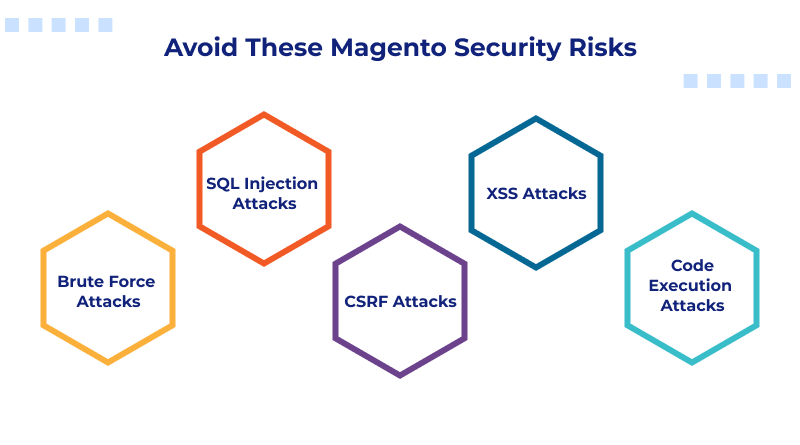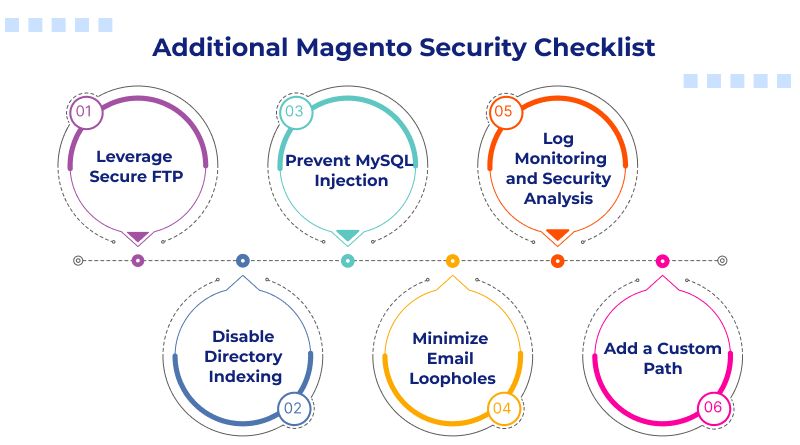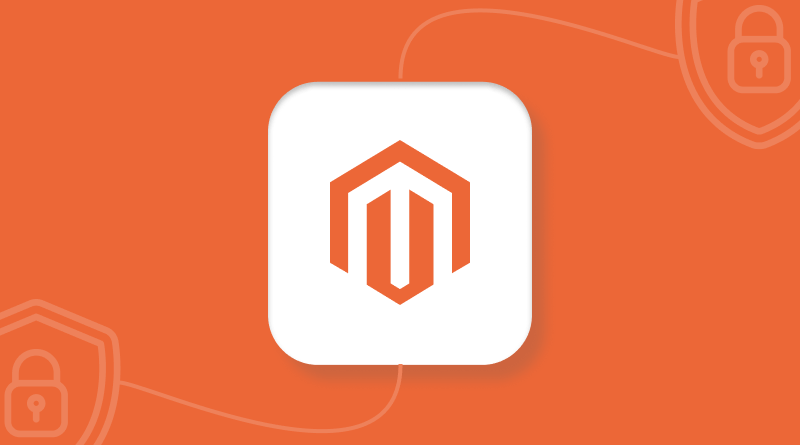Magento has gained widespread recognition in the eCommerce industry, owing to its periodic updates and advanced features. The most significant benefit of the platform is its cutting-edge security. Contrary to the other platforms where security comes as a premium service, for Magento, it is the foundation of its e-commerce ecosystem.
Whether managing a Magento store or a WordPress hosting setup, your platform is only as reliable as your security.
With over 51 million online businesses depending on it, Magento is the leading eCommerce solution. However, its global reach makes it a potential target for attackers, as the client information gathered by even small e-commerce shops holds great value.
With the intensifying number of online attacks, it’s no longer a question of if, but when your website will be attacked. Fortunately, by implementing various impactful security practices, you can remarkably enhance the security of your Magento store, minimizing the risk of cyberattacks.
Table Of Content
What is Magento Security?
Keeping your Magento store secure is a non-negotiable aspect for any business. Fortunately, Magento is one of the finest eCommerce platforms that provide robust and pre-integrated security that helps minimize security risks such as privacy issues, data breaches, fraudulent purchases, and other cyber frauds. With regards to Magento security, make sure you have deployed all the latest tools and techniques, such as reliable themes, extensions, and web hosting services.
Irrespective of the size or operational history, it precisely indicates that if anyone is willing to launch their online store, their priority is Magento. Although a majority of e-commerce providers are rarely aware of the Magento security tips that ensure exceptional security practices and productivity.
Avoid These Magento Security Risks
For better understanding, explore the list of top Magento security threats that could potentially harm your online business.

1. Brute Force Attacks
Brute-force attacks depend on predicting passwords through the conventional trial-and-error method. Hackers prefer automated tools that produce combinations of credentials to get access to the Magento website backend as a system administrator.
2. SQL Injection Attacks
A structured query language (SQL) attack involves inserting harmful codes into a website’s SQL code to gain access to its database. After stepping in, hackers can control confidential data in several ways, such as revealing statistical information, breaching, updating, and erasing client data.
3. CSRF Attacks
Cybercriminals deploy Cross-Site Request Forgery (CSRF) attacks to deceive the website’s trusted customers into doing unwanted actions such as adding or deleting records, conducting unlawful transactions, buying a product, or resetting a password. Hackers target Magento websites that face challenges in recognizing the differences between authentic and invalid requests.
5. XSS Attacks
XSS (Cross-Site Scripting) is a common security threat that occurs when an intruder pushes suspicious or harmful code into the website. This kind of cyber attack is intended for stealing classified data, such as financial details, or to execute operations such as making illegitimate purchases on behalf of the client.
6. Code Execution Attacks
These attacks focus on the Magento website’s hosting server and harm it by deploying random code that offers hackers full command over the system. Once the system is compromised, a hacker can carry out various harmful actions, such as misusing classified data, deploying malware, updating or removing data, and much more.
Need for Magento Security
It is obvious that where there are online shops, there are chances of cyberattacks. eCommerce often faces security breaches, and cybercriminals are always on the trail to find loopholes in the Magento stores to exploit.
Generally, these suspicious aspects attack websites to carry out activities like
- Spamming
- Phishing
- Misusing user data
Even though Magento gets security patches periodically, there are numerous Magento security patches and techniques that Magento store owners can implement to prevent attackers from spoiling their efforts.
Shield your Magento Store
1. Keep Your Magento Version Updated
It’s an impactful move to keep your Magento store up to date. Magento not only offers advanced security features but also comes with crucial bug fixes. Hackers can easily get through the traditional insecure features, and this can be an easy gateway for them. By the time of the arrival of a new release, old loopholes may be easily exposed on the internet. Thus, it is crucial to stay aware of the latest version release. Once a reliable release is out, you should conduct testing before deployment.
2. Employ Two-Factor Authentication (2FA)
Magento platform provides exceptional two-factor authentication, which offers an additional layer of secrecy against data breaches and suspicious activities. It only enables authentic devices to access the Magento 2 backend by using several types of authenticators.
The pre-integrated Magento Two-Factor Authentication enables you to elevate your Magento admin login security by employing the password and a time-based security code sent to your smartphone. Always make sure that you share the code with legitimate clients to access the Magento admin dashboard.
3. Choose a scalable web host
It’s an open secret that shared hosting is not a feasible solution for any business. Generally, for Magento startups, shared hosting appears to be a decent solution; however, choosing a shared hosting plan implies that you are negotiating on Magento store security.
Dedicated hosting can seem like a balanced solution; however, it may turn out to be inadequate for your business needs as you will be constrained to a single server. It limits your resources, and if there is an unanticipated surge in your Magento store’s traffic, the website will face downtime.
On the other hand, a managed cloud hosting provider can be your ideal Magento hosting solution that assures sturdy security by offering a malware scanner, SSL encryption, and periodic security patches at the server level. Keep in mind that plenty of hosting plans boast extraordinary features that they can’t provide (at least, at low costs). Avoid such plans, as they are clueless about Magento security issues.
4. Deploy SSL Encryption
Any time you transfer data, like your login details, through an unencrypted connection, there are chances of that data being intercepted. This insecure connection can provide intruders access to your login details. To reduce such risks, you should prefer a secure Magento connection.
In Magento, you can have a secure HTTPS/SSL URL by simply checking the tab “Use Secure URLs” from the system configuration settings. Additionally, it’s one of the most crucial measures in making your Magento website compliant with the PCI data security standard, safeguarding your digital payment.
Additional Magento Security Checklist

1. Leverage Secure FTP
One of the most preferred ways to attack a website is by predicting or intercepting FTP passwords. To avoid the occurrence of such incidents, it’s highly recommended to choose a strong password and use a Secured File Transfer Protocol (SFTP) that employs a private key file for verification of a user.
2. Prevent MySQL Injection
Magento offers comprehensive support to deal with any MySQL injection attack with its latest version and security fixes; however, it’s not always the best way to depend on them. We recommend deploying a web application firewall to keep your website and customers secure. Moreover, you can deploy Magento 2 security patches offered by the official developer platform.
3. Log Monitoring and Security Analysis
Proactive monitoring and reporting not only help recognize invalid requests but also enhance business operations based on user experiences. Always keep track of server files and deploy a notification whenever there are any changes in the file system, either about their permissions or the addition of new files. Logging and supervising can also assist in the identification and mitigation of attacks at an early stage.
4. Disable Directory Indexing
Disabling directory indexing is a crucial way to enhance Magento store security. By disabling the directory indexing, you can hide particular paths through which the domain files are stored.
It prevents hackers from accessing your Magento-powered website’s core files. Although they can still access your data if they know the path of your data.
5. Minimize Email Loopholes
Magento offers its users an efficient password recovery solution through its pre-integrated email address. If that email ID is compromised, your entire Magento store could be at risk. You must ensure that the email address you employ for Magento should be confidential and protected with two-factor authentication.
6. Add a Custom Path
You access your Magento panel by going to my-site.com/admin. However, from this, attackers can easily reach your Magento admin login page and initiate a brute-force attack.
You can avoid this by replacing /admin with a custom term. It keeps hackers away from your admin login page even if they get your password. You can update your Magento admin path by editing the local.xml file in Magento 1 or the env.php file in Magento 2.
Securing your Magento store is a constant process that needs perseverance and proactive technique. Magento security tips and techniques not only secure confidential client information but also improve the overall efficiency and credibility of your online business.
Emphasizing top-grade security and periodically examining your practices will help you ensure that your Magento website stays scalable and well-protected.
Don’t take the chance of becoming prone to cyberattacks. By following the practices we have summarized, you can strengthen your Magento website, secure your client’s data, and experience complete stability and serenity.
FAQs
What are the common security threats to Magento stores?
With the rise in cyberattacks, Magento stores have to deal with security issues like
– Malware and viruses
– Brute force attacks
– SQL injection
– CSRF attacks
– XSS attacks
These loopholes significantly contribute to substandard performance and revenue loss. However, implementing Magento security tips and proactive security measures can help mitigate the risk of such online threats.
How to protect customer data in Magento?
The Magento platform offers sturdy security measures to secure their client’s data. By employing essential security practices such as installing SSL encryption, implementing two-factor authentication, and periodic Magento updates, you can secure your customer’s sensitive data. Moreover, limiting access, using sturdy passwords, and periodically backing up your website data are also some of the feasible and impactful techniques for protecting your valuable client data.
What are secure coding practices for Magento developers?
By following subsequent coding practices, developers can minimize the risk of cyber attacks.
– Implementing input validation
– Using prepared statements to avoid SQL injection
– Executing apt session management
– Employ pre-integrated security features
– Performing periodic system audits
How to choose and manage third-party extensions securely?
When selecting the best third-party extensions, always make sure that they come from trusted resources with satisfactory reviews and ratings. Never forget to deploy and test that application on your staging platform before installing it on the production website. Additionally, use the latest versions to ensure optimum security.















